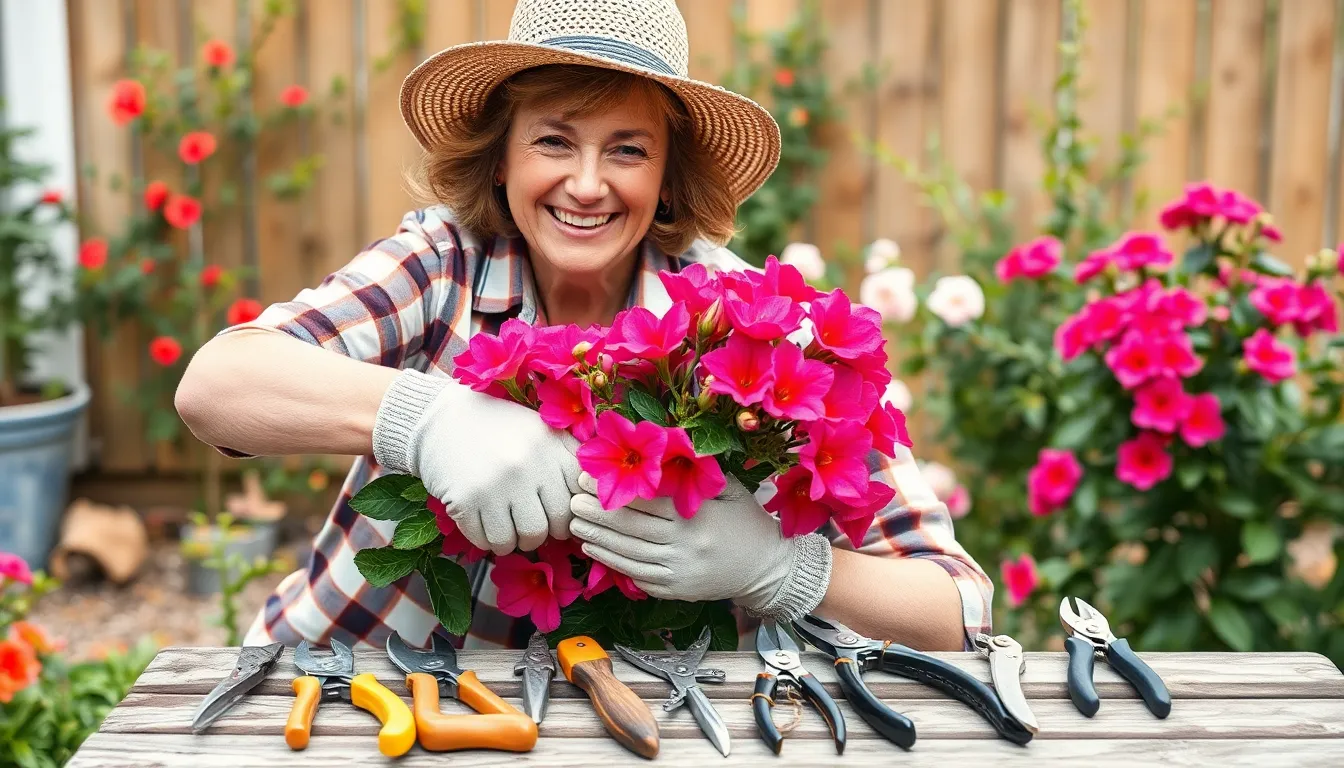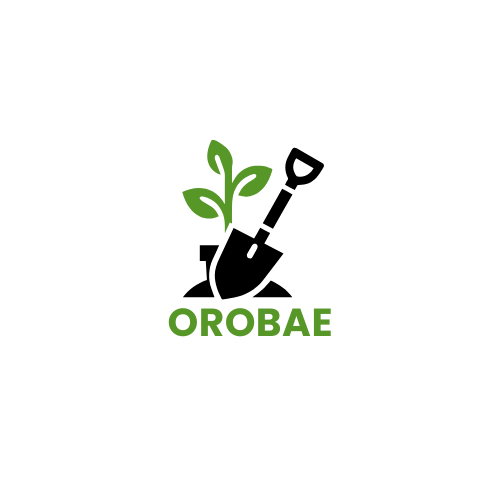Gardening might seem like a peaceful pastime, but let’s face it—without the right tools, it can turn into a battle against weeds and stubborn soil. Imagine trying to plant a rose bush with nothing but a spoon. Not exactly a recipe for success! Understanding gardening tool names not only helps in selecting the right equipment but also makes you sound like a pro at your next garden party.
Gardening Tool Names
Understanding common gardening tools is essential for efficient gardening. Having the right tools simplifies tasks and enhances productivity.
Hand Tools
Hand tools include essential items that every gardener needs. Trowels serve multiple purposes, like digging holes or transplanting seedlings. Pruners enable precise cutting of plants and branches. Hand forks assist in loosening soil and removing weeds. Rakes collect leaves and debris. Each tool plays a distinct role in maintaining garden health.
Power Tools
Power tools make larger gardening tasks more manageable. Lawn mowers trim grass quickly, ensuring a well-groomed landscape. String trimmers tackle weeds in hard-to-reach areas. Rototillers break up compacted soil to prepare for planting. Hedge trimmers create uniform shapes in shrubs. These tools emphasize efficiency, saving time and effort for gardeners.
Specialized Gardening Tools

Specialized gardening tools enhance efficiency for specific tasks. Gardeners benefit from understanding the various names and functions of these tools.
Pruning Tools
Pruning tools play a crucial role in maintaining plant health. Secateurs offer clean cuts for branches up to an inch in diameter. Loppers, with their long handles, manage larger limbs easily. Saws, especially pruning saws, tackle thicker branches and deadwood effectively. Hedge shears provide a neat finish for shrubs and hedges. Consider using a pole pruner for hard-to-reach areas, allowing for convenient cutting from the ground. Each tool ensures precision and reduces the risk of damaging plants during maintenance.
Weeding Tools
Weeding tools simplify the removal of unwanted plants. Hand weeding tools, like weeders or hand hoes, enable targeted weed extraction. A cultivator loosens soil while uprooting weeds simultaneously. A dandelion digger extracts deep-rooted weeds effortlessly, preventing regrowth. Gardeners often rely on hoes for larger areas, using the blade to chop through weeds. Using a weeding fork assists in removing stubborn weeds with resilience. Understanding these tools maximizes garden health while minimizing manual effort.
Unique Gardening Tool Names
Gardening tools often carry unique names that reflect their specific functions and historical significance. Exploring these names provides insight into gardening’s rich heritage and its evolution.
Historical Names
Traditional gardening tools include names steeped in history. The “hoe” derives from ancient agricultural practices, symbolizing soil cultivation across cultures. “Spade” refers to a tool used since Roman times, designed for digging. In medieval Europe, the “sickle” represented harvesting grains, showcasing its pivotal role in farming history. These names not only signify their function but also connect present-day gardening with ancient techniques and practices.
Modern Innovations
Modern gardening tools feature innovative names that highlight advancements in technology. The “electric cultivator” represents a shift from manual to powered gardening, enhancing efficiency. “Cordless hedge trimmer” reflects user-friendly design and convenience, appealing to both novice and experienced gardeners. Innovations such as “planting auger” streamline the process of planting bulbs and seedlings with minimal effort. Each name articulates a commitment to improving gardening practices through functionality and ease of use.
Essential Gardening Tools for Beginners
Essential gardening tools simplify the gardening process for beginners. A trowel serves as a foundational tool for digging and planting seeds. Pruners allow for precise trimming of plants, ensuring healthy growth. A hand fork is vital for breaking up soil and removing weeds efficiently.
Rakes help level soil and gather leaves, making cleanup easy. Soil moisture meters offer valuable insights into watering needs, promoting plant health. Gloves protect hands from thorns and dirt, ensuring comfort during gardening tasks.
Power tools can enhance efficiency as well. Lawn mowers cut grass quickly, maintaining a tidy lawn. String trimmers reach areas lawn mowers cannot, such as around fences and trees. Rototillers aerate soil, preparing it for planting by creating a nutrient-rich environment.
A watering can provides targeted watering for delicate plants and seedlings. A hose facilitates broader coverage, making it easier to manage larger gardens. Seeds and plant tags assist in organization, allowing for better tracking of plant varieties and growth.
Each tool is designed for specific tasks, making gardening more accessible. Having the right tools fosters confidence and enjoyment among novice gardeners. Understanding these essential tools equips beginners for a rewarding gardening experience.
Conclusion
Having the right gardening tools is crucial for anyone looking to cultivate a thriving garden. Each tool’s unique name and function not only enhance efficiency but also deepen one’s understanding of gardening practices. With a mix of traditional and modern tools available gardeners can tackle tasks with ease and confidence.
Whether it’s a simple trowel for digging or a sophisticated electric cultivator for larger projects every tool plays a vital role in achieving gardening success. By familiarizing themselves with these tools gardeners can elevate their skills and enjoy a more fruitful gardening experience. Embracing the right equipment ultimately leads to healthier plants and a more enjoyable journey in the garden.




